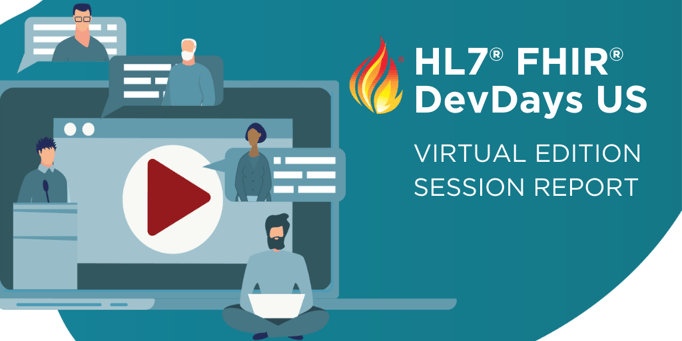
Report from Virtual FHIR DevDays 2020
A new initiative is making rapid progress in developing a way to improve how providers report COVID 19 data to public health agencies.
Started in late March, the Situational Awareness for Novel Epidemic Response (SANER) Project has made “huge progress in a short period of time,” said Keith Boone, enterprise architect for Audacious Inquiry, a consulting firm that helped to start the initiative.
The project leverages application programming interfaces using HL7 Fast Healthcare Interoperability Resource (FHIR) standards. An implementation guide is in the works, and the first pilot project is in the initial stages of planning in Maryland, Boone said.
The SANER Project is an open-source initiative that aims to streamline and accelerate the real-time transmission of de-identified data from healthcare facilities about patients, critical infrastructure and resource use to government response authorities during public health emergencies and disasters.
Boone noted that reporting requirements are dynamic and have been evolving over time during the weeks that the COVID-19 crisis has hit the U.S. In addition, it is challenging to get accurate and current information from electronic health records systems, because current systems often have a limited sense of what’s happening in the ICU. He added that harried staff often don’t document care until the end of their shifts, “so there can be a six-, eight- or even a 12-hour delay before an EHR even knows that ventilators that it thought were available are actually in use.”
Data that’s essential to managing the COVID-19 crisis is in a variety of digital systems, including bed management, asset management and laboratory information systems.
As the COVID-19 crisis has continued, healthcare organizations have seen diverse reporting requirements, including to agencies such as the Centers for Disease Control (CDC) and the Federal Emergency Management Administration (FEMA). Also, better information needs to flow more easily to provider organizations’ command and control centers.
Reporting through a SANER Project approach can simplify and automate the process, particularly for hospitals that don’t have API-enabled systems. This will be important moving forward, because it is expected that federal agencies will add reporting requirements for providers over time.
The SANER Project can also enable improved reporting over time as new structures emerge. Boone highlighted the development of local public health networks, an approach being used in Chicago, where Rush University Medical Center, which collects data from metro area hospitals and serves as the city’s authorized reporting agent to send data to FEMA and the CDC.
Join the FHIR Community Today!
For more information about the SANER Project, please visit: https://ainq.com/thesanerproject/
For more information about the SANER Project FHIR Implementation Guide, please visit: http://build.fhir.org/ig/HL7/fhir-saner/.


